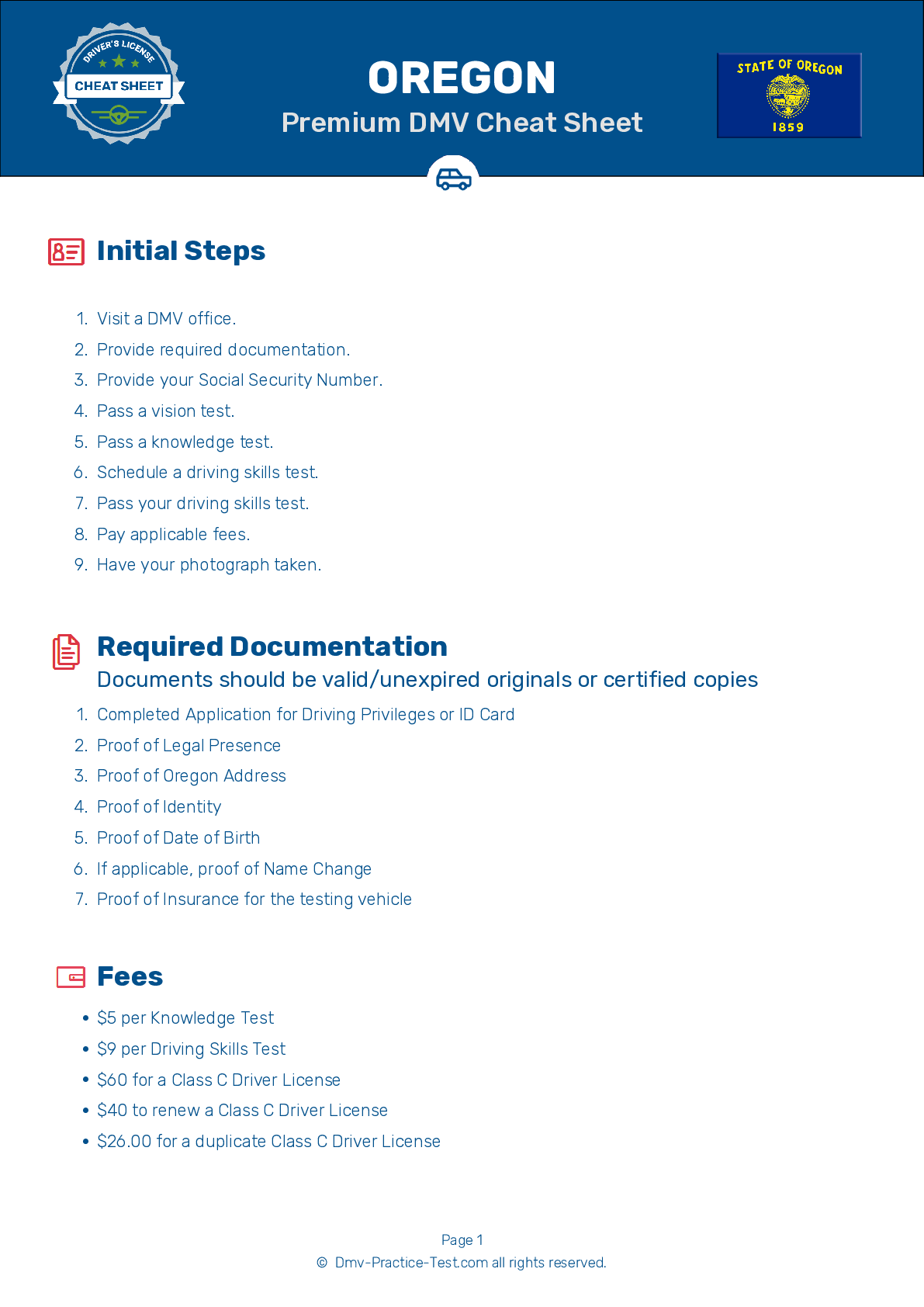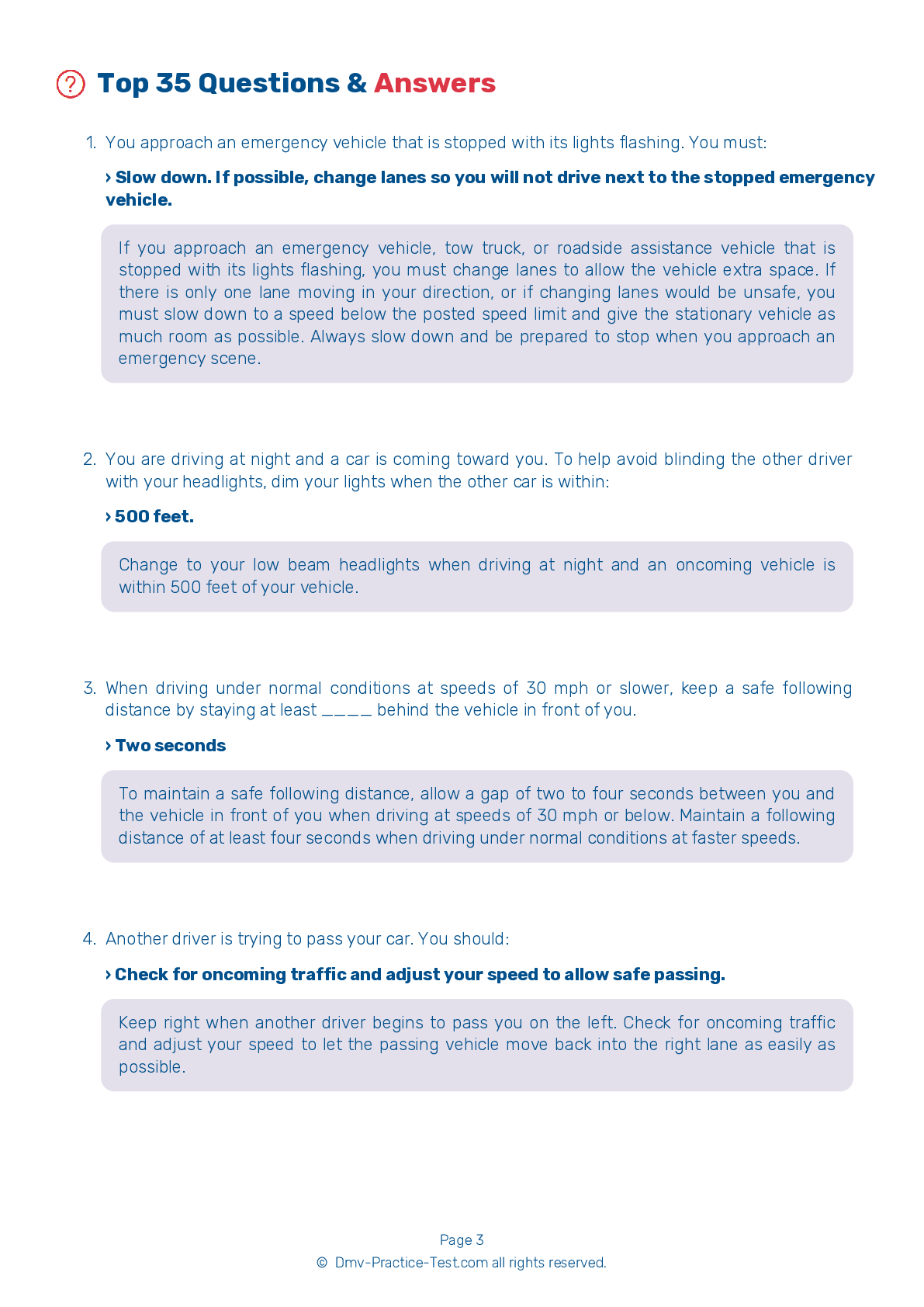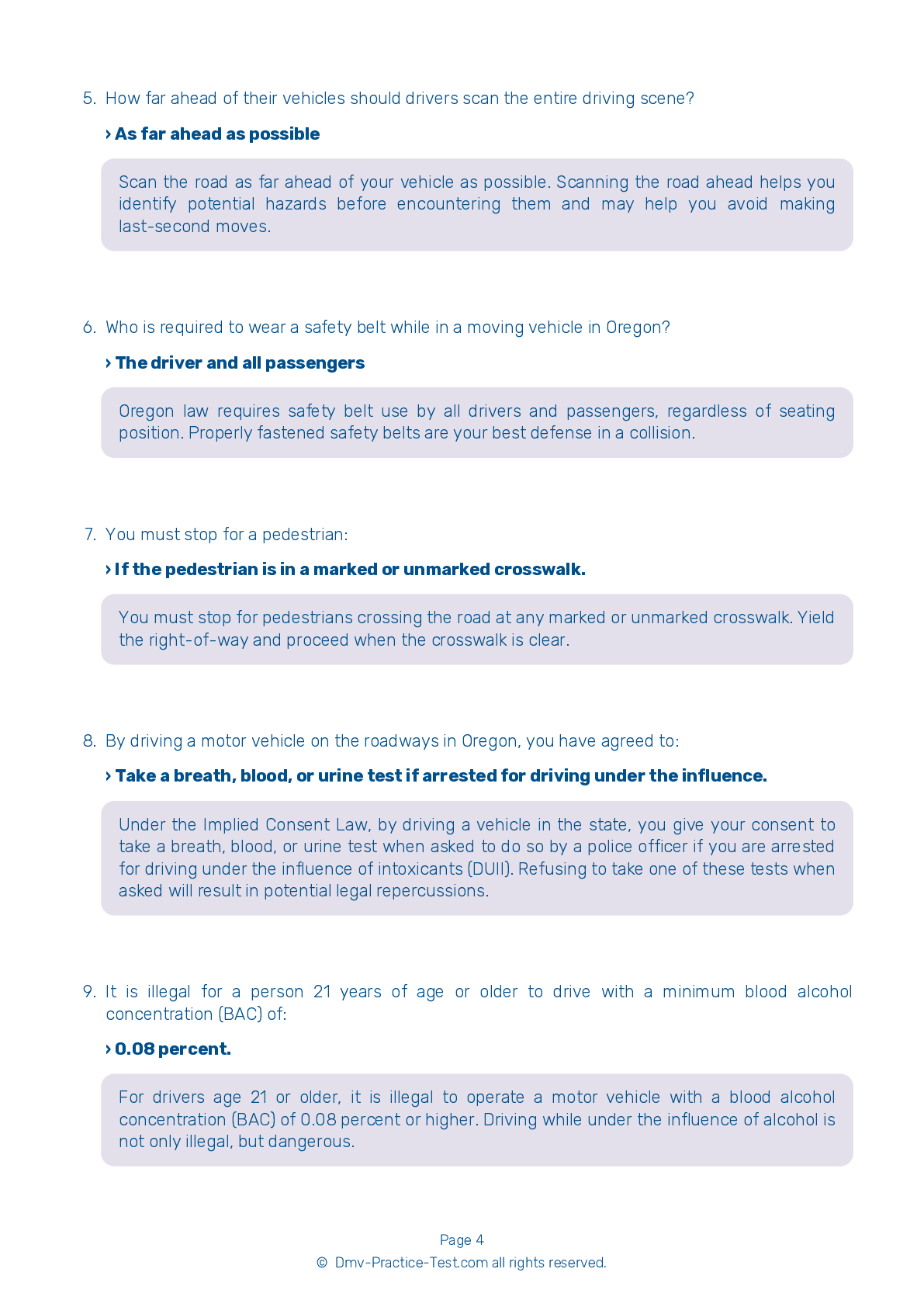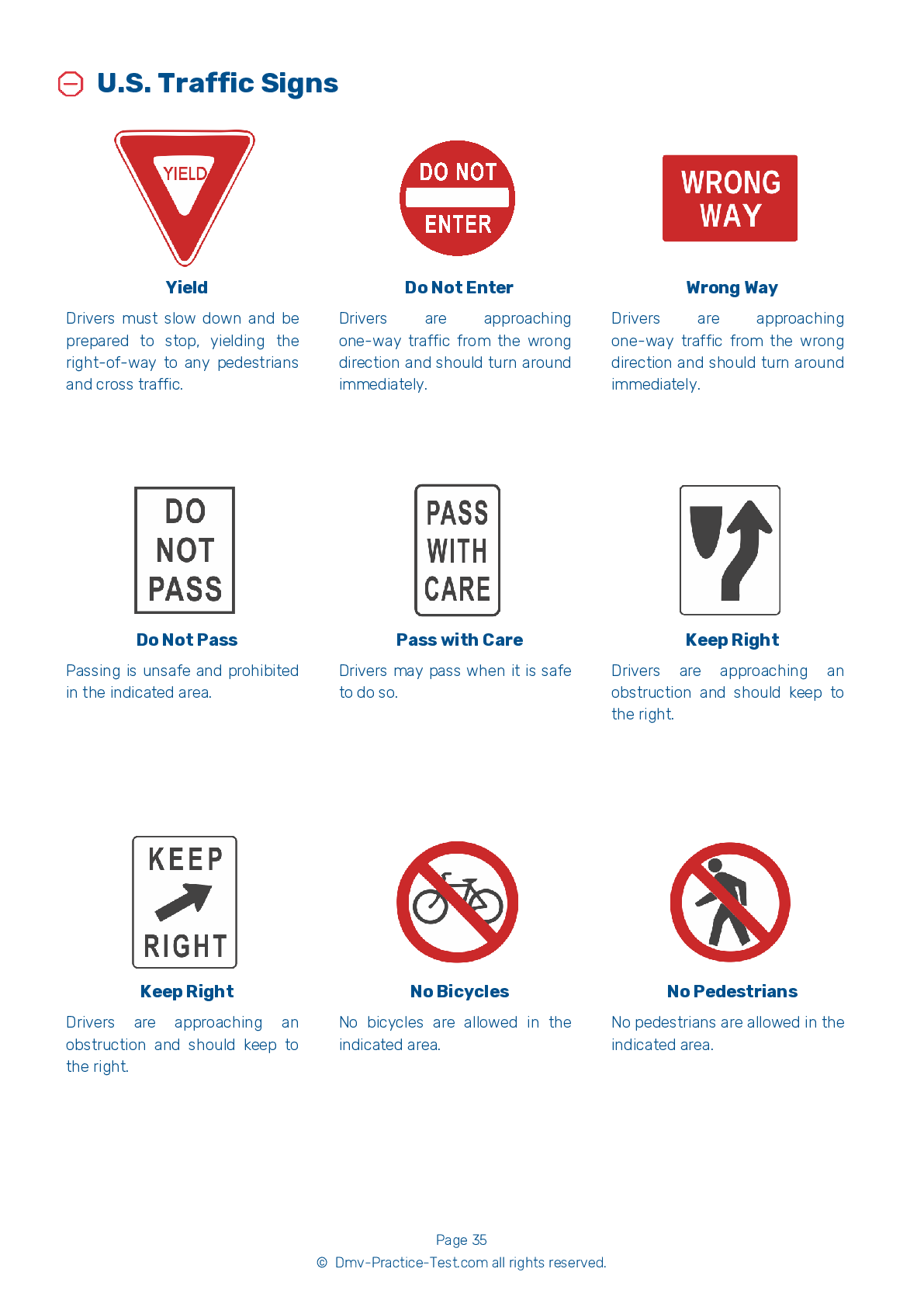FREE Oregon DMV Practice Test #1
The practise exams for the Oregon DMV have been updated for January 2026. It includes questions based on the most important traffic signals and regulations for 2026 from the Oregon Driver Handbook. To study for the DMV driving permit test and driver's licence exam, use actual questions that are very similar (often identical!) to the DMV driving permit test and driver's licence exam.
Each question on the practise exam has a tip and explanation to help you recall the ideas. Questions about traffic rules, traffic signs, and driving statutes, as well as knowledge from the Driver Handbook, will be included in the written portion of the official Oregon DMV test.
You must properly answer 28 of the 35 questions to receive a passing mark. Use the Oregon Department of Motor Vehicles' practise exam to help you prepare for your instruction permit or driver's licence.
The DMV exam is offered in a variety of languages.
Using any form of testing help will result in an automatic fail, and the DMV may take further action against your driver's licence, so avoid it.
1 . This sign means:
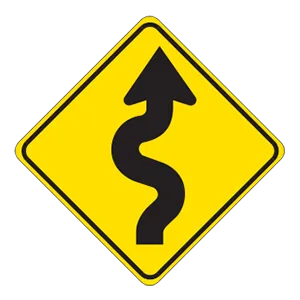
Warning signs prepare drivers for upcoming road conditions and hazards and are usually yellow with black markings. This sign warns drivers that they are approaching a winding road and that they should adjust their speed accordingly.
2 . If a green arrow turns into a solid green light, you:
If a green arrow turns into a solid green light, you may still turn in the direction that the arrow was pointing but you must first yield to pedestrians and oncoming traffic.
3 . Taking drugs along with alcohol:
Drugs (including illegal, prescription, and over-the-counter medications) can affect your brain function and impair your ability to drive safely. Combining alcohol with other drugs will increase the risk of a crash.
4 . This road sign means:
.png)
This sign indicates the presence of a pedestrian crossing. You should watch for people entering a crosswalk or crossing your path. Slow down and be prepared to stop.
5 . You notice a vehicle defect which may affect the safe operation of your vehicle. You should:
Any defect that may affect the safe operation of a vehicle should be corrected as soon as possible. Defects should be corrected before the vehicle is driven.
6 . This road sign means:


